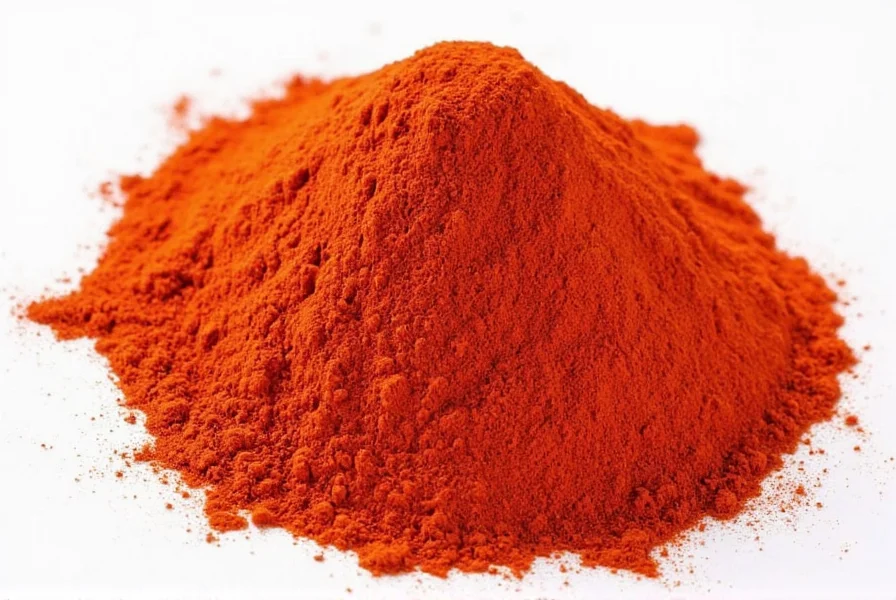Paprika offers significant health benefits due to its rich antioxidant content, particularly carotenoids like capsanthin. This vibrant spice supports eye health through vitamin A, promotes heart health with capsaicinoids, boosts immunity with vitamin C, and provides anti-inflammatory effects. Research shows paprika may improve circulation, support skin health, and offer protection against oxidative stress when consumed as part of a balanced diet.
Derived from ground peppers, paprika has been valued not just for its culinary versatility but for its impressive nutritional profile. This deep red spice contains essential vitamins, minerals, and powerful plant compounds that contribute to multiple health benefits. Unlike many processed spices, high-quality paprika retains significant nutritional value that can enhance both flavor and wellness.
Nutritional Powerhouse: What Makes Paprika Special
Paprika's health advantages stem from its unique composition. Just one tablespoon (6 grams) provides:
| Nutrient | Amount per Tablespoon | Percentage of Daily Value |
|---|---|---|
| Vitamin A | 1,920 IU | 38% |
| Vitamin E | 1.3 mg | 9% |
| Vitamin B6 | 0.2 mg | 10% |
| Vitamin C | 3.9 mg | 6% |
| Iron | 0.6 mg | 3% |
Beyond these vitamins and minerals, paprika contains potent carotenoids including capsanthin, beta-carotene, and zeaxanthin. These compounds give paprika its distinctive red color while delivering significant antioxidant benefits that protect cells from damage.

Antioxidant Properties of Paprika
The antioxidant properties of paprika make it particularly valuable for combating oxidative stress. Research published in the Journal of Agricultural and Food Chemistry identified paprika as containing higher antioxidant capacity than many common spices. The primary antioxidants in paprika include:
- Capsanthin - The main carotenoid responsible for paprika's red color, with potent free radical-scavenging abilities
- Beta-carotene - Converts to vitamin A in the body and protects against cellular damage
- Zeaxanthin - Particularly beneficial for eye health
- Vitamin E - Protects cell membranes from oxidative damage
These compounds work synergistically to neutralize harmful free radicals that contribute to chronic diseases and aging. Regular consumption of antioxidant-rich foods like paprika may help reduce the risk of conditions associated with oxidative stress.
Eye Health Benefits of Paprika
One of the most significant paprika health benefits relates to vision protection. The carotenoids in paprika, particularly lutein and zeaxanthin, accumulate in the retina where they function as natural light filters. These compounds protect the eyes from damaging blue light and oxidative stress.
A study in the American Journal of Epidemiology found that higher dietary intake of carotenoids like those found in paprika correlated with a 43% reduced risk of age-related macular degeneration. The vitamin A content in paprika also supports night vision and overall eye health by maintaining the cornea and conjunctival membranes.
Heart-Healthy Effects of Paprika
Research suggests paprika benefits for cardiovascular health through several mechanisms. The capsaicinoids in paprika (though present in lower concentrations than in chili peppers) may help improve circulation and support healthy blood pressure levels.
A 2020 review in Nutrients highlighted that regular consumption of carotenoid-rich foods like paprika associates with improved endothelial function—the lining of blood vessels that regulates blood flow and pressure. Additionally, the potassium content in paprika helps balance sodium levels in the body, further supporting healthy blood pressure.

Immune System Support from Paprika
The vitamin C content in paprika, while modest compared to citrus fruits, still contributes to immune function. More significantly, paprika's vitamin A plays a crucial role in maintaining the integrity of mucosal barriers in the respiratory, gastrointestinal, and genitourinary tracts—your body's first line of defense against pathogens.
According to research in the Journal of Clinical Medicine, adequate vitamin A intake supports the production and function of white blood cells, which are essential for fighting infections. The antioxidant compounds in paprika also help reduce inflammation that can weaken immune responses.
Anti-Inflammatory Properties of Paprika
Chronic inflammation underlies many health conditions, and paprika's anti-inflammatory effects offer protective benefits. The carotenoids and capsaicinoids in paprika help modulate inflammatory pathways in the body.
A study in Molecular Nutrition & Food Research demonstrated that capsanthin, the primary carotenoid in paprika, inhibits the production of pro-inflammatory cytokines. This suggests regular consumption of paprika may help reduce inflammation markers in the body, potentially benefiting conditions like arthritis and metabolic syndrome.
Skin Health Benefits of Paprika
Is paprika good for skin health? Evidence suggests yes. The combination of antioxidants, particularly vitamin E and carotenoids, helps protect skin from environmental damage. Vitamin A supports skin cell production and repair, while vitamin C contributes to collagen synthesis.
Research in the Journal of Cosmetic Dermatology indicates that dietary carotenoids improve skin hydration, elasticity, and protection against UV damage. While topical application of paprika isn't recommended (it can cause irritation), consuming paprika as part of a balanced diet contributes to overall skin health from within.
Practical Ways to Use Paprika for Health Benefits
To maximize the health advantages of paprika, consider these practical applications:
- Add to roasted vegetables for enhanced flavor and nutrient absorption
- Use in homemade spice blends for meats and fish
- Mix into hummus or bean dips for added nutrition
- Sprinkle on eggs or tofu scramble
- Incorporate into salad dressings and marinades
For maximum nutrient retention, add paprika toward the end of cooking or use it in no-cook applications. Heat can degrade some of the delicate compounds, so gentle handling preserves more of paprika's health-promoting properties.
Considerations When Using Paprika
While paprika offers numerous health benefits, certain considerations apply:
- Smoked paprika contains higher levels of polycyclic aromatic hydrocarbons (PAHs), so moderate consumption is advisable
- Some individuals may experience mild digestive discomfort with large amounts
- Choose high-quality, additive-free paprika for maximum benefits
- Store in a cool, dark place to preserve antioxidant content
Paprika is generally safe for most people when consumed in culinary amounts. As with any dietary change, those with specific health conditions should consult healthcare providers about incorporating more paprika into their diet.
Conclusion
The health benefits of paprika extend far beyond its role as a coloring agent in the kitchen. This vibrant spice delivers a powerful combination of antioxidants, vitamins, and plant compounds that support multiple aspects of health. From protecting vision and supporting heart health to boosting immunity and reducing inflammation, paprika represents a valuable addition to a health-conscious diet. By understanding how to select and use paprika effectively, you can harness these science-backed benefits while enjoying its distinctive flavor in everyday cooking.
Frequently Asked Questions
What's the difference between regular and smoked paprika health benefits?
Regular paprika retains more of its natural carotenoids, while smoked paprika contains additional compounds from the smoking process. Both offer similar antioxidant benefits, but smoked paprika contains polycyclic aromatic hydrocarbons (PAHs) that should be consumed in moderation. Regular paprika generally provides slightly higher vitamin content due to less processing.
How much paprika should I consume daily for health benefits?
There's no established daily requirement, but incorporating 1-2 teaspoons (2-4 grams) of paprika into your cooking most days provides significant health benefits without excessive intake. This amount delivers valuable antioxidants and nutrients while enhancing flavor without overwhelming your dishes.
Can paprika help with weight management?
Paprika contains capsaicinoids that may modestly boost metabolism and reduce appetite. While not a weight loss solution on its own, using paprika as a flavorful seasoning can help reduce the need for higher-calorie condiments. The antioxidants in paprika also support overall metabolic health, which contributes to healthy weight management.
Does cooking affect paprika's nutritional benefits?
High heat can degrade some of paprika's delicate compounds, particularly vitamin C and certain carotenoids. To preserve maximum nutritional value, add paprika toward the end of cooking or use it in no-cook applications like dressings. The fat-soluble carotenoids actually become more bioavailable when consumed with healthy fats, so pairing paprika with olive oil or avocado enhances absorption.
Are there any potential side effects of consuming paprika?
Most people tolerate paprika well in culinary amounts. Some individuals may experience mild digestive discomfort or heartburn with larger quantities. Those with nightshade sensitivities should monitor their reaction, as paprika comes from peppers. Topical application can cause skin irritation, so paprika should only be consumed internally, not applied directly to skin for purported benefits.











 浙公网安备
33010002000092号
浙公网安备
33010002000092号 浙B2-20120091-4
浙B2-20120091-4